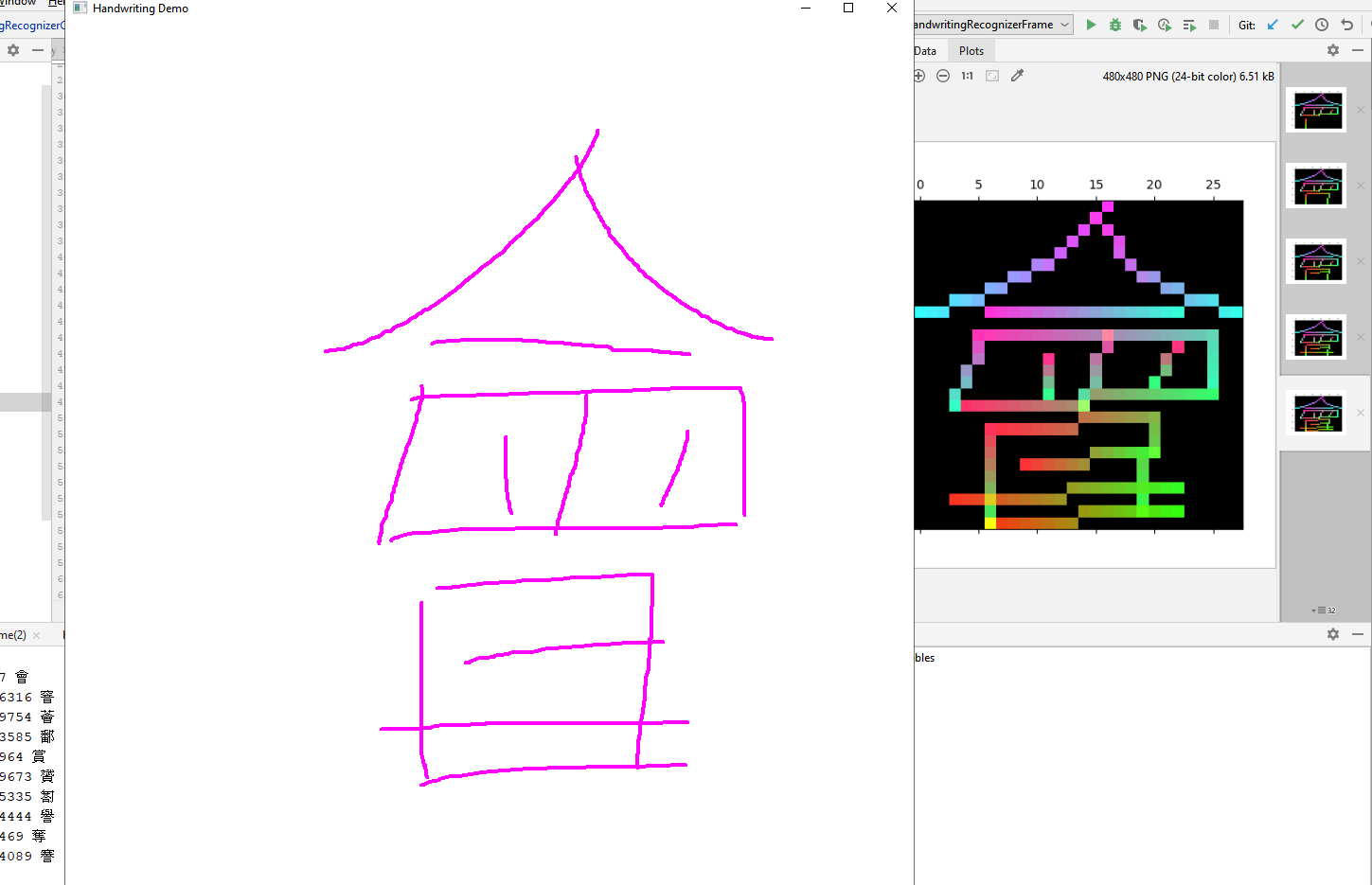A convolutional neural network using Keras for recognising Chinese (Simplified/Traditional) and Japanese Kanji licensed under the LGPL 2.1. An advantage over many other open-source engines is that strokes can be drawn out-of-order (to an extent).
It is intended to be used as an input method, and accepts x,y coordinate points of strokes as input parameters. This differs from some other engines which are trained to recognise Kanji/Hanzi drawn on physical paper with a brush or pen.
Type:
apt install git
pip3 install svg.path numpy
pip3 install git+https://github.com/mcyph/cnn_chinese_hwIf you just want to get predictions, you don't need a full tensorflow install -
you can use the instructions at https://www.tensorflow.org/lite/guide/python
to install just the tensorflow lite runtime. This also has the advantage that
the model can work on older processors which don't support the AVX extensions.
In order to train the model however, you will need tensorflow at least version 2.0+.
pip3 may need to be updated to do this.
pip3 install --upgrade pip
pip3 install tensorflowThere are also some demo wxPython recognizer/new stroke registry applications in
the directory cnn_chinese_hw/gui. These need wxPython, matplotlib and pillow
in addition.`
from cnn_chinese_hw.recognizer.TFLiteRecognizer import TFLiteRecognizer
rec = TFLiteRecognizer()
print(rec.get_candidates_list(
[[(208, 0), (199, 119), (94, 341)],
[(0, 461), (781, 520), (915, 520), (999, 479)],
[(189, 167), (213, 209), (238, 826), (268, 934), (203, 910)],
[(303, 514), (94, 766)],
[(462, 17), (497, 586), (522, 688), (646, 886), (796, 1000)],
[(716, 628), (462, 916)],
[(696, 101), (771, 155), (835, 251)]]
))This should recognize 我 (the ordinal of it, 25105):
[(0.99929094, 25105), (0.00034741702, 22941), (0.00023694134, 30330), ...]It augments the Tomoe data: distorting from the center, randomizing the points, rotating the characters and strokes to a degree to increase the likelihood of recognition. There are three channels - one for the start of strokes, one of the end, and one which fades out towards the end, so as to make stroke order and direction all criteria from which strokes are recognised.
When the correct candidate isn't always the first one, it usually is in the top few. Adding batch normalization to both the dense (fully connected) layers and convolutional 2d layers significantly improved results.
Because the data was drawn by only a few people, it may have trouble recognising some people's handwriting, although I think it provides pretty good results. I have added a few hundred characters which I have drawn myself, many of them with incorrect numbers of strokes/more or less curves so as to increase the likelihood of the CNN being able to recognize different people's handwriting, including non-native speakers.
It is validated against the KanjiVG data with an accuracy percentage of around 94%. It's hard for me to say how well that translates to writing on a tablet/phone screen, or drawing with a mouse. However cursive testing says it performs reasonably well, even if not as well as with a wacom tablet or pen. I may later combine my previous handwriting engine that on compared x,y point positions and angles, augmenting the results.
Because it uses Tomoe data, I have put this project and my supplemental data under the same license (LGPL 2.1). Compared to the license of some other publicly available Chinese handwriting datasets, the LGPL is quite permissive and allows for commercial use.
KanjiVG data is also included for validation purposes. This data is not combined when recognizing due it being under the Creative Commons Attribution-ShareAlike 3.0 license.
Copyright (C) 2020 Dave Morrissey
This library is free software; you can redistribute it and/or
modify it under the terms of the GNU Lesser General Public
License 2.1 as published by the Free Software Foundation.
This library is distributed in the hope that it will be useful,
but WITHOUT ANY WARRANTY; without even the implied warranty of
MERCHANTABILITY or FITNESS FOR A PARTICULAR PURPOSE. See the GNU
Lesser General Public License for more details.
You should have received a copy of the GNU Lesser General Public
License along with this library; if not, write to the Free Software
Foundation, Inc., 51 Franklin Street, Fifth Floor, Boston, MA 02110-1301
USA

